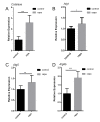Rapamycin preserves gut homeostasis during Drosophila aging
- PMID: 26431326
- PMCID: PMC4742104
- DOI: 10.18632/oncotarget.5895
Rapamycin preserves gut homeostasis during Drosophila aging
Abstract
Gut homeostasis plays an important role in maintaining the overall body health during aging. Rapamycin, a specific inhibitor of mTOR, exerts prolongevity effects in evolutionarily diverse species. However, its impact on the intestinal homeostasis remains poorly understood. Here, we demonstrate that rapamycin can slow down the proliferation rate of intestinal stem cells (ISCs) in the aging guts and induce autophagy in the intestinal epithelium in Drosophila. Rapamycin can also significantly affect the FOXO associated genes in intestine and up-regulate the negative regulators of IMD/Rel pathway, consequently delaying the microbial expansion in the aging guts. Collectively, these findings reveal that rapamycin can delay the intestinal aging by inhibiting mTOR and thus keeping stem cell proliferation in check. These results will further explain the mechanism of healthspan and lifespan extension by rapamycin in Drosophila.
Keywords: Drosophila; Gerotarget; aging; gut homeostasis; intestinal stem cell; rapamycin.
Conflict of interest statement
The authors declare no conflict of interests.
Figures





References
-
- Nuzzo D, Picone P, Baldassano S, Caruana L, Messina E, Gammazza AM, Cappello F, Mule F, Di Carlo M. Insulin Resistance as Common Molecular Denominator Linking Obesity to Alzheimer's Disease. Current Alzheimer research. 2015;12:723–35. - PubMed
Publication types
MeSH terms
Substances
LinkOut - more resources
Full Text Sources
Other Literature Sources
Medical
Molecular Biology Databases
Miscellaneous

